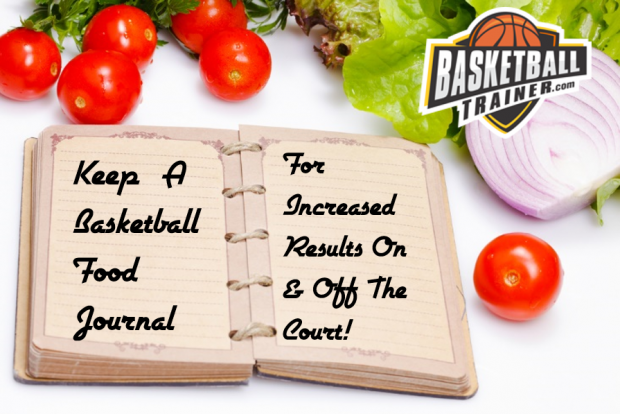
Become An Effective Leader on and off the Basketball Court
Many coaches and players analyze the art of basketball leadership training. Some people believe that leaders are born naturally, already possessing the qualities needed to motivate and inspire others. However, it takes mindfulness and diligence to become an effective leader and regardless of whether you feel like you were born with the pre-disposition to lead – you certainly have what it takes to become one!
By beginning to focus and work on the following 5 traits of a great leader, you can begin to mold yourself into the type of player that people want to have as a motivating force on and off the basketball court.
1. Lead by example
Leading by example is the foremost thing that you must remember as you are working to build up your reputation as a leader on and off the basketball court. You have to continually be thinking of how your coaches, teachers, classmates and teammates see you and whether your actions line up directly with your words. This is not to be confused with caring too much what other people think, however it is important that you are mindful and you do care about your reputation. Think about the people that you look up to and consider what you expect from them in regards to their consistent actions, words and behaviors – it’s safe to assume that someone that leads by example is going to be well-liked, trusted and respected by their superiors and peers.
A good example of this would be to arrive early to practice and stay late – the more you focus on leading by example the more your teammates will follow in your footsteps and next thing you know, you might have three or four after practice shooting buddies. Everyone is always looking for someone to emulate and follow – why not you?
2. Nurture your relationships
Relationships with people are at the top of the list for leaders, because without others who is there to lead? Whether it is with authority figures like your basketball coaches and teachers or your fellow teammates and classmates, it’s important that you strive to have a positive relationship with every single person that you interact with on a daily basis.
There will always be people that you tend to “click” with better and they will be your close companions, but being a leader requires that you prove your ability to be adaptable to different personalities and with people who have different viewpoints in life as well. Regardless of whether you are interacting with someone you get along with well or someone that you simply tolerate, as a leader, it is your responsibility to ensure that you are doing everything in your personal power to make everyone feel part of the team. Taking a few minutes after practice to sit down and get to know a teammate more personally or simply to encourage them more often is a great way to nurture your relationships. The same goes for people outside of your team as well – who can you think of that you could invest a few extra moments of quality time into encouraging and building up today?
3. Volunteer your time
Time is the most valuable thing than anyone can give to another person or cause. It’s easy to get caught up in our own little worlds and focus all of our time and energy on what we need to get done in order to accomplish our personal goals. However, caring leaders put it in their schedules to take valuable personal time to help with causes that may not directly benefit them in the long run. This attribute of a leader can be used in many ways on and off the basketball court and will certainly speak volume to your character.
There are always opportunities in your community to give of yourself and time to help those in need – whether it’s through your local church and school, or whether it’s something that you simply saw that needed to be done for your neighbor – volunteering is something that not many people are willing to do on a consistent basis.
Take a few moments to check in with your coach to see how you can help him with any extra tasks in the locker room or out on the floor for cleanup after practice. It doesn’t matter if you’re the leading scorer on the team or not, if you want to become a leader, you have to be willing to serve others first!
Another great idea for volunteering for your basketball team would be to hang around before or after practice to rebound the ball for a teammate that you know has been working to improve their form and increase their shooting percentage. The only element missing may just be extra support and encouragement from a leader to gain the confidence they need to excel – you really never know what great things can come from small, random acts of kindness!
4. Convert your leadership failures and weaknesses into strengths
The greatest leaders are very aware of what their weaknesses are. Rather than focusing on those weaknesses to the point of self-defeat, a great leader will turn that weakness around and use it as strength – it’s all about your mindset!
An effective leader is also not afraid of failing from time to time. If Michael Jordan sat down after missing a potential game winning shot and threw his hands up in the air with self- doubt and defeat, he’d never have become the basketball great that he is adorned for being today.
“I’ve missed more than 9,000 shots in my career. I’ve lost almost 300 games. 26 times, I’ve been trusted to take the game winning shot and missed. I’ve failed over and over again in my life and that is why I succeed.” –Michael Jordan
As you can see, Michael Jordan always focused his personal attention to making his weaknesses his strengths and you have to do the same if you are going to reach your leadership potential. Whether you need to spend more time working on your defensive game or you need to cut back the social time to put in those few extra hours of studying a school subject to help you increase your grade point average, you must take your weaknesses into account and work at them harder than anything else. Eventually, they won’t be your weaknesses anymore and you can switch your focus onto something new – that’s the beauty in it!
5. Become highly coachable – leaders should know how to follow!
Coachable basketball players are always the most successful. It’s easy to step out onto the court as a talented player and “do your thing” so to speak. However, when striving to become the best leader possible, you have to be willing to admit when you’re wrong and need guidance.
Being coachable means that you are teachable, and this certainly applies to every aspect in life. The best people to learn from in life are those with experience and wisdom – your elders and authority figures. To be a coachable person, you have to be willing to listen first and speak less. You also have to be accepting of and open to constructive criticism; you may not always like what your coaches, teachers and parents have to say, but if you focus on grasping their overall point within their message you will gain their respect and you will benefit most.
Your teammates and peers are always watching, and if you roll your eyes and throw your head back when your coach reminds you for the fifth time in one practice to set a screen within a play your team is learning, your teammates might just do the same or form a negative opinion of you. It’s best to accept that you are struggling and focus more on getting it right. If by the end of practice you still don’t feel confident in what you are doing, take a few extra moments to grab your coach and have him break it down for you until you feel confident. Your coach will appreciate your openness and will enjoy helping you as you are willing to be coachable!
6. Work harder than anyone else
Great leaders may not always be the best players on the team or the smartest students in class, but they do outwork other people to the point of it being noticeable by those around them. It takes a lot of effort to earn leadership status on a basketball team, and the best leaders out there didn’t have it handed to them. Not only do you need to concentrate on your character development, but you also have to be willing to get to work!
Leading by example is one thing, but by striving to be the best every workout, practice or game through your work ethic is another. You may not be that player or student that everything just seems to come easy for and that’s fine – that just means when you do reach your goals and you do outcompete your teammates and peers you can be confident in knowing that you genuinely worked for it.
Your work ethic should be filled with so much fire and passion, that you motivate those around to take their intensity up a level when you are around – the inspiring quality of a true leader!
Leaders are not always naturally born and they certainly don’t become effective role models by not working at it. Whether you feel like you have what it takes already or simply want to focus on developing the characteristics required for leading others, this list is a great place to start because you do have what it takes to motivate, inspire and encourage – all within you!









